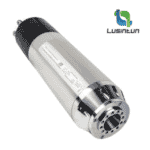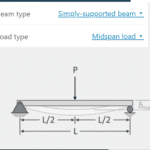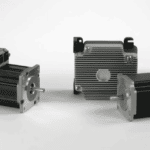Don't worry, We do not spam! By clicking to subscribe, you agree to our privacy policy.
Best 3 Endmill Coatings for Milling Aluminum to Prevent Chip Welding
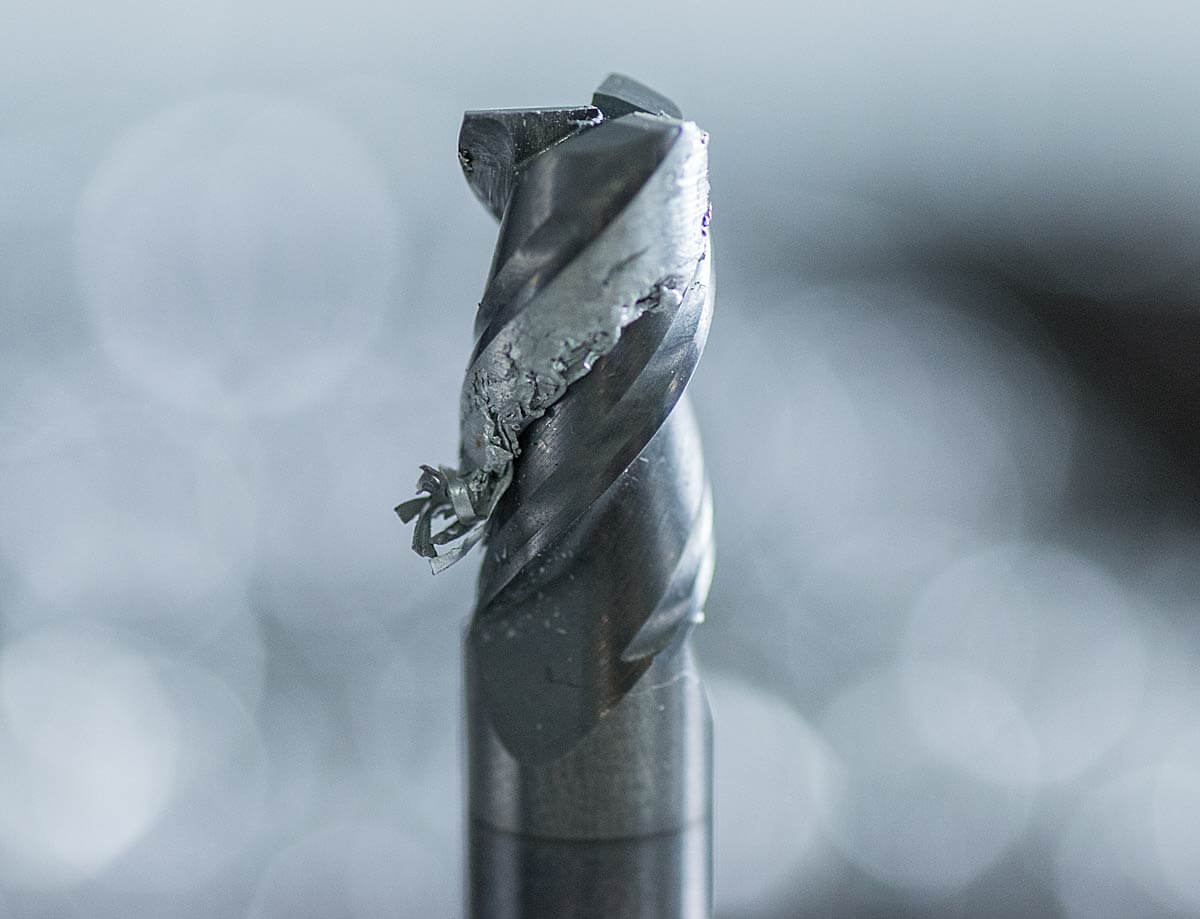
Milling aluminum can present numerous challenges due to the material’s tendency to stick to cutting tools and the risk of chip welding. To overcome these issues, it is important to choose the right endmill coating that offers excellent non-stick properties and prevents chip welding. In this article, we will explore the top 3 endmill coatings for milling aluminum and their characteristics, including their coefficient of friction, to help improve your machining process.
But before we dive into the specific coatings, it’s important to understand what an endmill coating is and why it’s important. An endmill coating is a thin layer applied to the surface of an endmill, a type of cutting tool used in milling operations, to improve its performance and extend its lifespan. There are various types of coatings available, each designed to address specific issues and improve the tool’s performance in specific materials.
The choice of endmill coating is crucial because it can significantly impact the efficiency and accuracy of the milling process. A good coating can reduce tool wear, improve cutting speeds, and increase tool life, leading to cost savings and increased productivity. On the other hand, a poor coating choice can result in tool failure, poor surface finish, and increased cycle times.
When milling aluminum, it is essential to choose a coating that has excellent non-stick properties and prevents chip welding. This is because aluminum has a high affinity for sticking to cutting tools and is prone to chip welding, which can lead to tool failure and poor surface finish. A non-stick coating helps to reduce the risk of tool failure and improve the overall performance of the milling process.
What is an Endmill Coating and Why is it Important?
An endmill coating is a thin layer applied to the surface of an endmill, a type of cutting tool used in milling operations, to improve its performance and extend its lifespan. There are various types of coatings available, each designed to address specific issues and improve the tool’s performance in specific materials.
When milling aluminum, it is essential to choose a coating that has excellent non-stick properties and prevents chip welding. This is because aluminum has a high affinity for sticking to cutting tools and is prone to chip welding, which can lead to tool failure and poor surface finish. A non-stick coating helps to reduce the risk of tool failure and improve the overall performance of the milling process.
Best Endmill Coatings for Milling Aluminum
There are several endmill coatings available on the market, each with its unique properties and benefits. Some of the best coatings for milling aluminum are: Platit Naco-Blue, PCD (Polycrystalline Diamond), and Diamond-Like Carbon (DLC).
#1 PCD (Polycrystalline Diamond) Coating

PCD (Polycrystalline Diamond) is a superhard coating that is made up of diamond particles that are sintered together using a high-pressure, high-temperature process. It has a coefficient of friction of 0.1-0.3u and is known for its excellent wear resistance and ability to prevent chip welding, making it an ideal choice for milling aluminum. PCD coatings offer excellent lubricity and can withstand high cutting speeds, making them suitable for high-speed milling operations. They also offer excellent tool life and reduced tool wear, making them a cost-effective choice for milling aluminum.
One of the main advantages of PCD coatings is their excellent wear resistance, which allows them to maintain their performance for longer periods of time compared to other coatings. This can lead to increased productivity and cost savings by reducing the need for frequent tool changes. PCD coatings also offer excellent surface finish and can be used on a variety of materials, including aluminum, steel, and titanium. However, one of the main disadvantages of PCD coatings is their high cost, which can make them less cost-effective for some applications. They also require careful handling and storage to prevent damage and maintain their performance.
#2 Diamond-Like Carbon (DLC) Coating

Diamond-Like Carbon (DLC) is a hard, wear-resistant coating that is known for its excellent non-stick properties and low coefficient of friction of 0.1-0.2.
It is applied using a PVD process and is made up of a thin layer of amorphous carbon that contains small amounts of hydrogen and other elements. DLC coatings offer excellent wear resistance and can withstand high cutting speeds, making them suitable for high-speed milling operations. They also offer excellent tool life and reduced tool wear, making them a cost-effective choice for milling aluminum.
One of the main advantages of DLC coatings is their excellent non-stick properties, which helps to prevent chip welding and improve the surface finish of the milled parts. They also offer excellent lubricity and can be used on a variety of materials, including aluminum, steel, and titanium. However, one of the main disadvantages of DLC coatings is their sensitivity to temperature and humidity, which can affect their performance. They also require careful handling and storage to prevent damage and maintain their performance.
Platit DLC Coating Information Pamphlet
#3 Naco-Blue Coating (Platit nACo)

Platit Naco-Blue is a high-performance endmill coating that is known for its excellent non-stick properties and ability to prevent chip welding. It has a low coefficient of friction of 0.4u and is applied using a physical vapor deposition (PVD) process. It is made up of a thin layer of titanium nitride (TiN) with a thin layer of aluminum oxide AlTi(Si) on top. The TiN layer provides high hardness and wear resistance, while the AlTi(Si)N layer offers excellent lubricity and prevents chip welding.
One of the main advantages of Platit Naco-Blue coatings is their ability to reduce tool wear and improve cutting speeds, leading to increased productivity and cost savings. They also offer excellent surface finish and can be used on a variety of materials, including aluminum, steel, and titanium. However, one of the main disadvantages of Platit Naco-Blue coatings is that they can be brittle and prone to chipping if subjected to high impact forces. This can be mitigated by using a thicker coating or by applying a secondary coating for added toughness.
Platit nACo Coating Information Pamphlet
My personal experience and recommendations
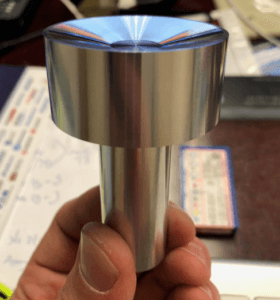
In my experience, PCD (polycrystalline diamond) coating is excellent for creating mirror-like finishes on aluminum. However, the high cost of this coating means that I personally use APKT1135 R0.4 PCD inserts in combination with a BAP300R tool holder, only for the finish pass to maximize its lifespan.

For roughing, both DLC (diamond-like carbon) and Nano blue coatings work well. Personally, I prefer DLC coating as it still provides a good finish and is more affordable than PCD. It has better non-stick (chipweld) properties than Nono-blue coating.
I had good results with the 1 flute and 3 flute Dreanique DLC 5$ endmill from Aliexpress.
Nano blue coating is a good choice for a multi-material endmill that can handle aluminum and steel. This versatility makes it a useful general-purpose endmill coating.
Conclusion
In conclusion, choosing the right endmill coating is essential for efficient and accurate milling of aluminum. PCD, DLC and Platit Naco-Blue, coatings are some of the best options available, each offering unique properties and benefits for milling aluminum.
It is important to consider the specific needs of your application and choose a coating that offers the best balance of performance and cost-effectiveness. By choosing the right endmill coating, you can improve the efficiency and accuracy of your milling process, leading to increased productivity and cost savings.
However, there is no one-size-fits-all solution when it comes to endmill coatings. Different coatings are better suited for different materials and applications, and it is important to carefully consider the specific requirements of your operation before making a decision.
We would love to hear from you in the comments below about your experiences with endmill coatings for milling aluminum. What coatings have you used, and what were the results? What factors did you consider when choosing a coating? Share your thoughts and experiences with us and let’s continue the discussion!




